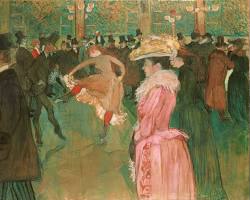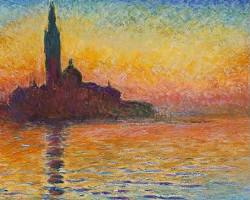Impressionism Art Movement
- portiaibe
- Nov 14, 2023
- 2 min read
Emerging from the mid-19th century art scene in France, Impressionism was a revolutionary movement that challenged the rigid conventions of traditional painting. Rejecting the emphasis on historical, mythological, or religious subjects, Impressionist artists sought to capture the fleeting moments of light and life in their everyday surroundings.
Key Characteristics of Impressionism
Impressionism was characterized by several key features that set it apart from other art movements:
Emphasis on Light and Color: Impressionists were fascinated by the ever-changing effects of light on objects and scenes. They used short, visible brushstrokes to capture the play of light and color, often employing a palette of pure, unmixed hues.
Painting en Plein Air: Breaking away from the confines of the studio, Impressionists frequently painted outdoors, directly observing and capturing the ever-changing natural world.
Ordinary Subject Matter: Impressionists turned their attention to everyday scenes, depicting the hustle and bustle of urban life, the tranquility of landscapes, and the candid moments of human interaction.
Open Compositions: Impressionist paintings often featured open compositions, breaking away from the traditional emphasis on balance and symmetry. They used cropping, unusual viewpoints, and blurred edges to create a sense of immediacy and immersion.
Notable Impressionist Artists
The Impressionist movement was spearheaded by a group of talented artists, each with their unique style and contributions:
Claude Monet: Considered the father of Impressionism, Monet is renowned for his landscapes, capturing the fleeting effects of light and atmosphere in scenes of water lilies, haystacks, and the French countryside.
Pierre-Auguste Renoir: Renoir's paintings are characterized by their vibrant colors, soft brushstrokes, and depictions of everyday life, often featuring scenes of leisure, pleasure, and feminine beauty.
Edgar Degas: Degas was a master of capturing movement and expression, known for his paintings of ballet dancers, horse races, and urban scenes.
Camille Pissarro: A key figure in the Impressionist movement, Pissarro's work is characterized by its solid composition, strong sense of light, and depictions of both rural and urban landscapes.
Paul Cézanne: Cézanne's work bridged Impressionism and Post-Impressionism, known for his use of geometric forms, simplified shapes, and a more structured approach to capturing the essence of a scene.
Impact and Legacy of Impressionism
Impressionism's influence on the art world has been profound and enduring, paving the way for modern art movements and inspiring generations of artists. Its emphasis on light, color, and the capture of fleeting moments continues to captivate audiences worldwide.
Impressionism's impact extends beyond the realm of painting, influencing fashion, literature, and music. Its focus on capturing the essence of everyday life and the beauty of the natural world continues to resonate with people across cultures and time periods.
The Impressionist movement stands as a testament to the power of art to capture the fleeting moments of light, life, and human experience, leaving an indelible mark on the history of art and the hearts of art enthusiasts worldwide.








Comments